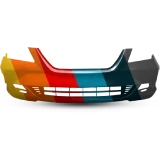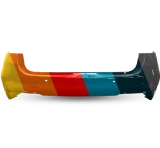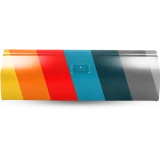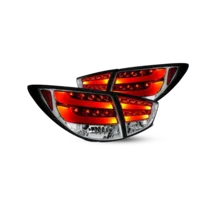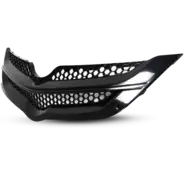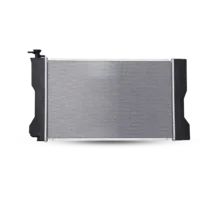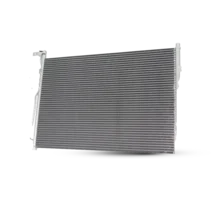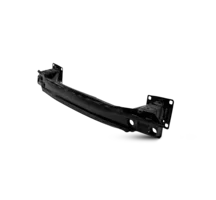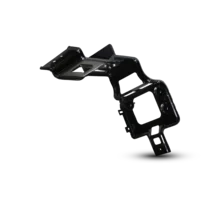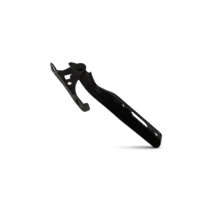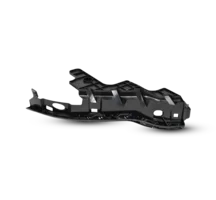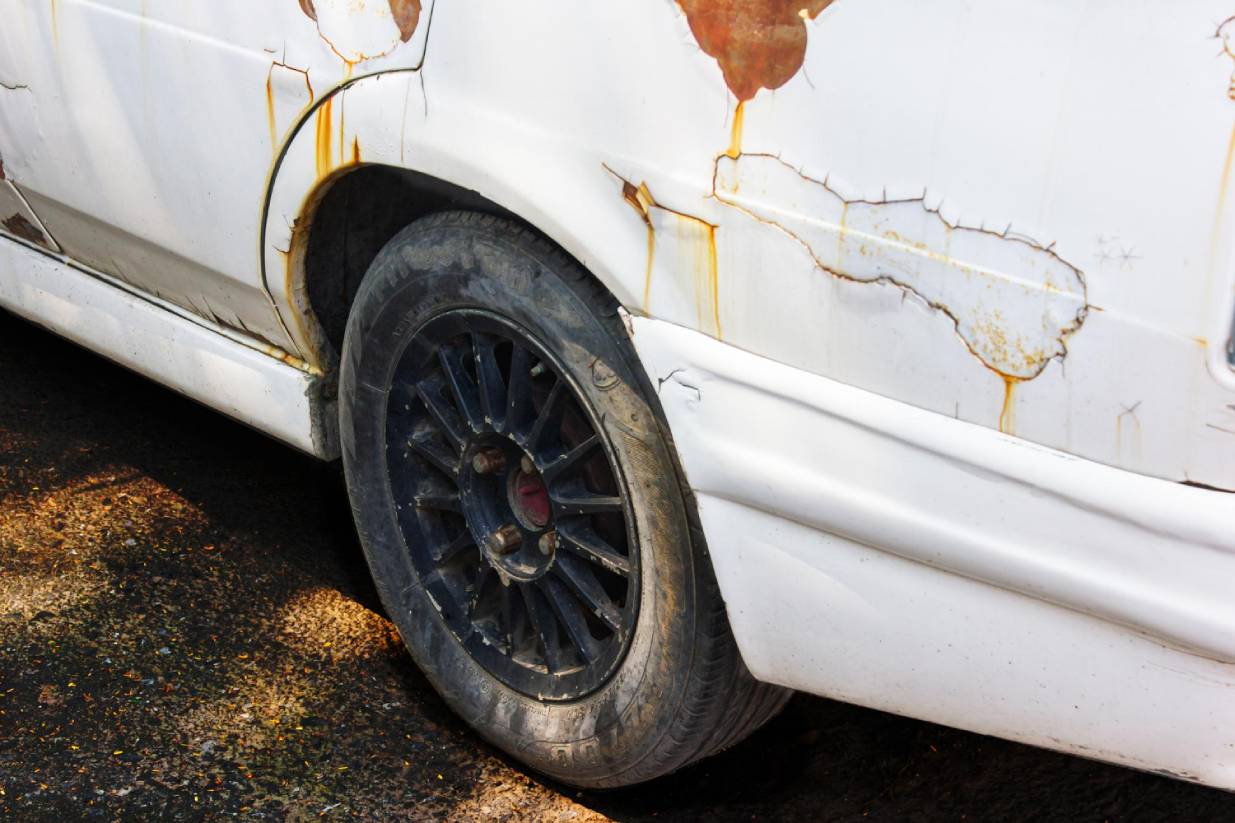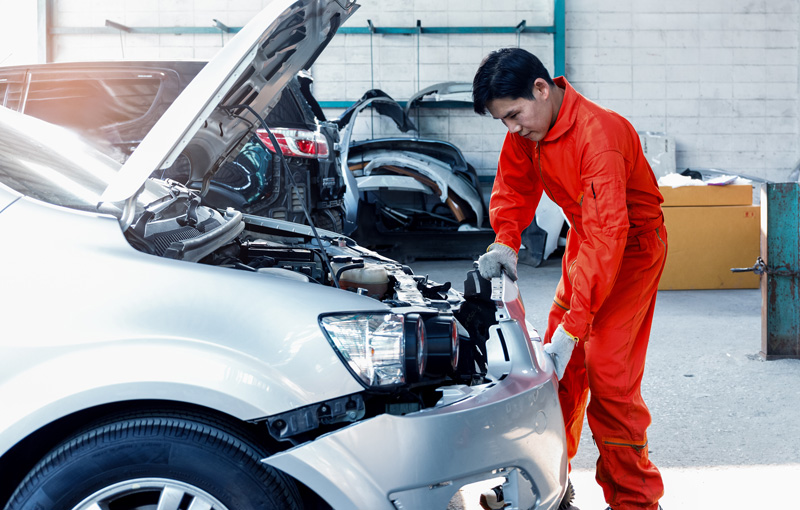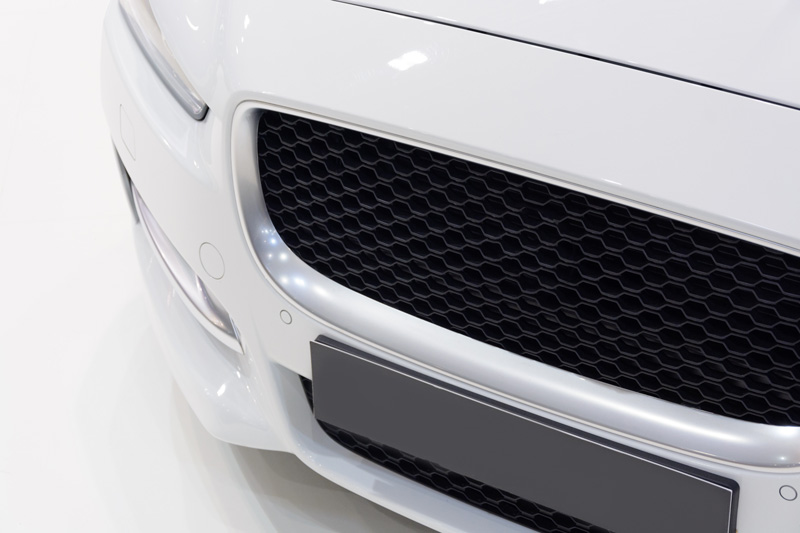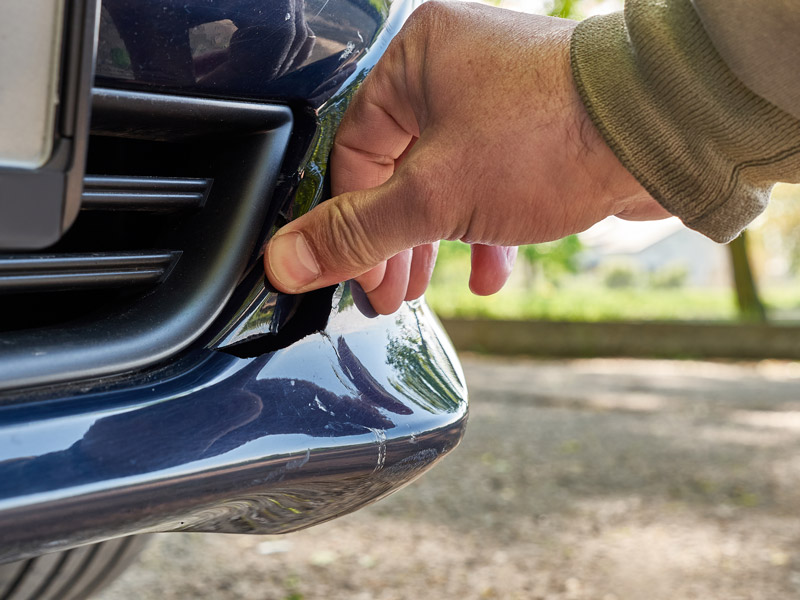Car paint oxidation develops gradually, leaving once-glossy surfaces dull, chalky, and faded. This problem results from paint's exposure to sunlight, oxygen, and environmental contaminants. While oxidation affects the visual appeal, it also signals weakened protective layers that expose your vehicle to further deterioration.
Acting early restores both appearance and protection, preventing the need for costly repainting. Drivers who understand the signs, causes, and step-by-step restoration process can return their vehicle's finish to a rich, long-lasting shine.
Key Takeaways:
- Oxidation is the breakdown of paint due to UV rays, oxygen exposure, and neglected protection.
- Identifying the degree of oxidation helps choose between mild polishing and intensive restoration.
- Proper preparation, materials, and tools ensure safe and effective results.
- Protecting the paint after polishing prevents future oxidation and extends the life of the finish.
What Is Car Paint Oxidation
Oxidized car paint describes a chemical process where oxygen and UV rays break down the paint's outermost layers. Automotive paint includes a base coat for color and a clear coat for protection. Over time, the clear coat weakens, allowing oxidation to erode pigments beneath. This creates a chalky texture and faded color.
In early stages, oxidation makes surfaces lose gloss and appear slightly hazy. As the problem advances, the paint becomes powdery, and deeper color layers degrade. Severe oxidation can lead to peeling and eventual exposure of bare metal, accelerating rust.
Understanding oxidation as a process rather than just a visual defect clarifies why prompt treatment is necessary. Restoring clarity early requires less effort and maintains structural protection, while severe oxidation demands extensive correction or even repainting.
How to Identify Oxidized Car Paint
Before fixing oxidation, you must confirm its presence and severity. Many drivers confuse oxidation with dirt or surface stains, but the treatment differs entirely.
Signs of Oxidation
Oxidized paint presents distinct characteristics. The surface looks dull even after washing, with diminished reflection. Touching the panel may leave a chalky residue on your fingers, a clear sign of degraded clear coat. In advanced stages, uneven patches develop where sunlight exposure is strongest, such as the roof, hood, and trunk.
Unlike scratches, oxidation does not follow a linear pattern. Instead, it appears as uniform dullness or blotchy areas across exposed panels. Recognizing these symptoms early allows you to intervene before the paint suffers irreversible damage.
Causes of Oxidation
Oxidation arises primarily from environmental exposure. Ultraviolet rays from the sun accelerate molecular breakdown in the clear coat. Oxygen penetrates weakened layers, fueling chemical degradation. Heat, moisture, and pollutants compound the problem, especially in vehicles parked outdoors without regular waxing or sealing.
Neglected maintenance plays a major role. When protective wax wears off and surfaces remain unprotected, the clear coat becomes vulnerable. Acidic contaminants such as bird droppings or tree sap further weaken the surface, speeding oxidation. Vehicles in coastal areas also face salt exposure, which aggravates fading and corrosion.
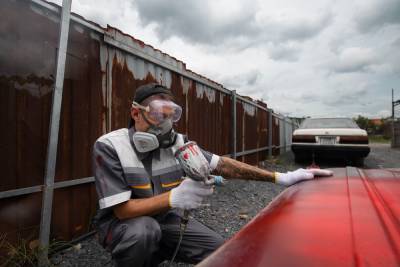
Preparing for the Fix
Successful paint restoration requires careful preparation. Jumping directly into polishing without proper setup risks spreading contaminants, scratching the paint, or achieving uneven results.
Gathering Necessary Materials
To fix oxidized car paint, you need cleaning supplies, restoration products, and protective finishes.
Essential items include:
- Automotive soap and microfiber wash mitts.
- Clay bar and lubricant to remove bonded contaminants.
- Polishing compound suitable for oxidation removal.
- Wax or paint sealant for long-term protection.
- Microfiber towels for buffing and drying.
Additional products like masking tape for trim protection, detailing sprays, and dual-action polishers improve efficiency and quality. Choosing high-quality materials ensures consistent performance throughout the process.
Choosing the Right Tools
Tools make the difference between mediocre and professional-looking results. A dual-action polisher offers consistent motion and minimizes heat buildup, reducing the risk of damaging the clear coat. Polishing pads come in different levels of abrasiveness, with cutting pads for heavy oxidation and finishing pads for final shine.
Hand application remains possible, but it requires more time and energy, and results often lack uniformity. Investing in proper equipment pays off with better finish, deeper gloss, and less fatigue. For severe cases, professional-grade rotary polishers provide stronger correction but demand advanced skill to avoid burning paint.
Step-by-Step Process to Fix Oxidized Car Paint
Addressing oxidation follows a structured process that begins with thorough cleaning and ends with protective sealing. Skipping steps or rushing compromises the result, leaving the paint vulnerable to renewed damage.
Step 1: Cleaning the Car Surface
The first stage is removing contaminants that interfere with polishing. Wash the vehicle with automotive soap, avoiding household detergents that strip oils harshly. Use a microfiber wash mitt to lift dirt gently without creating scratches.
Once dry, inspect the paint with your fingertips. If you feel roughness, clay barring is necessary. The clay bar lifts embedded contaminants like tar, sap, and industrial fallout, creating a smooth surface. This step ensures that polishing compounds contact only the oxidized layer instead of grinding debris into the paint.
Step 2: Applying Polishing Compound
Polishing restores clarity by removing the thin oxidized layer and leveling the surface. Apply compound to a pad or applicator, spreading it evenly across a small section. Work in overlapping passes with moderate pressure, allowing abrasives to cut gradually.
For heavy oxidation, start with a cutting compound and pad, then switch to a finishing polish. Check progress frequently, wiping away residue with a microfiber towel. The goal is to remove haze and reveal fresh paint beneath without thinning the clear coat excessively.
Polishing by machine produces more consistent results than hand application. Dual-action polishers maintain even pressure and minimize swirl marks, making them ideal for both beginners and advanced users.
Step 3: Sealing and Protecting the Paint
After restoring gloss, protection is critical to prevent recurrence. Wax and sealants create a barrier against UV rays, oxygen, and environmental contaminants. Carnauba wax provides a deep, warm shine but requires frequent reapplication. Synthetic sealants last longer, offering durable defense for several months.
For maximum longevity, ceramic coatings present a premium option. These coatings bond chemically with the paint, forming a hardened layer that resists oxidation, chemical etching, and UV degradation for years. Regardless of choice, applying a protective finish completes the restoration and preserves your effort.
Final Thoughts
Fixing oxidized car paint restores not only the vehicle's beauty but also its protective strength. Early detection, proper preparation, and methodical restoration yield dramatic improvements, often making years of wear disappear in a single session.
For drivers dealing with moderate to severe oxidation, using professional-grade materials and reliable suppliers matters. Painted Auto Parts provides access to high-quality painted auto products designed to match factory standards, giving every restoration long-lasting success.
By combining precise technique with trusted protection, vehicle owners can enjoy renewed shine while safeguarding against future damage. Consistent care and periodic waxing or sealing keep the paint resilient, ensuring your vehicle looks and performs its best for years.
FAQs
How long does paint restoration last after fixing oxidation?
- Results typically last six months to a year, depending on environmental exposure and whether protective wax or sealant is reapplied regularly.
Can deep oxidation be fixed at home?
- Mild to moderate oxidation responds well to DIY polishing, but severe cases with peeling clear coat often require professional repainting.
What is the best way to prevent future oxidation?
- Regular washing, applying protective wax or sealant, and parking under shade or cover extend paint life and reduce oxidation risks.
